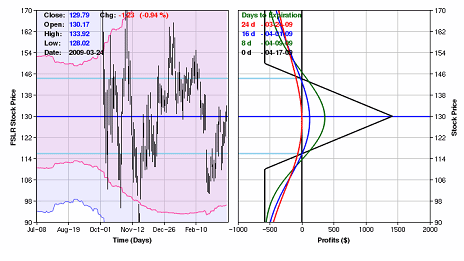A butterfly spread is a combination of a bear and bull spread, which makes it a neutral strategy. The strategy is defined as neutral because the option is sold at-the-money. Usually, this type of strategy involves purchasing one call option at a set strike price while at the same time auctioning off two call options at a higher strike price and purchasing one call action at an even higher price. It can also entail purchasing one put action at a set strike price while selling two put options at a lower strike price and purchasing one put option at a lower price than the selling price of the previous two put options. The strategy has curtailed risk options and as a result, it bears limited profit.
A unique strategy of increasing the reward-to-risk potential of this strategy is known as the out-of the money butterfly spread.
Definition of the out of the money butterfly spread
The out of the money butterfly spread typically works like a neutral butterfly spread. The only difference is that with the OTM butterfly, the option sold is an out-of-the money option rather than an at-the money option. To put it more simply, the OTM butterfly is a directional spread in that the stock has to move in the expected direction in order for the trader to make a profit.
When the OTM butterfly is used as an out-of-the money call, the stock needs to move upwards in order for the trader to realize a profit. If the OTM butterfly is entered as an out-of-the money put, then the stock needs to go lower in order for the trade to make a profit.
Appropriate time to use the OTM butterfly
The best time to enter an OTM butterfly option is when the trader anticipates the stock to move a bit higher but he cannot specifically foretell the extent of the move. When the trader is merely speculating that the stock will move upwards, then the OTM strategy can afford him a low risk transaction, with a significantly higher award-to-risk ratio. The OTM strategy can also assure the trader of a higher probability of profit if the underlying stock does in deed move upwards. However, when the trader is not merely speculating but is anticipating that the stock will move significantly upwards, then he should buy a call option rather than relying on an OTM butterfly. When there is a degree of certainty about the magnitude of the stock movement, then buying a call option can afford the trader almost unlimited profit probability.
In most instances, it is more beneficial for the trader to enter an OTM butterfly when option volatility is still low. When the implied volatility of an option is low, usually a lower time premium is included in the price of the options to be traded. It is important to note that every option trade costs money to enter. Thus, a trader will have to part with less money when he purchases an option that has a low implied volatility.























